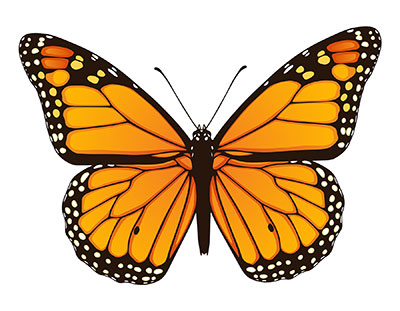"USFWS Proposed Rule: Thoughts and Implications
 From the January 22, 2025 Monarch Watch Blog (monarchwatch.org) From the January 22, 2025 Monarch Watch Blog (monarchwatch.org)
"We have been receiving questions about our thoughts related to the U.S. Fish and Wildlife Service (USFWS) proposed rule to list the monarch butterfly as threatened 4(d) under the Endangered Species Act, as well as what the implications are for Monarch Watch programs. We provide our responses to both questions below, as well as an overview of the listing process and proposed rule.
One topic we have been thinking about is the limit of 250 or fewer butterflies placed on scientific research and educational activities. Monarch Watch has several programs to support our education, conservation, and research mission that mean we currently go above that limit, and that would likely apply to other organizations and individuals as well. For example, we have supported a community-science tagging program since 1992, and some of our taggers regularly tag more than 250 monarchs per year, including some organizations and groups that host tagging events. We also provide educational resources and programs that emphasize the monarch life cycle through the inclusion of monarchs in classrooms and other educational settings, and at in-person events. The research programs of individual researchers, including my own, would also typically exceed that limit, especially if the research requires maintaining a colony of monarchs. At the public hearings on Jan. 14 and 15, the USFWS emphasized that it is possible these activities could continue, but a permit would be needed. An alternative approach to permits would be to increase the number of monarchs included in the exemption for specific activities or to completely exempt certain activities. These alternative approaches would be more likely to ensure these activities continue without additional regulatory constraints.
Implications of the Proposed Rule for Monarch Watch Programs
None of the actions included in the proposed rule will take effect until after the USFWS decides whether to list the monarch butterfly. The 90-day comment period is open until March 12, 2025, after which the USFWS will evaluate the comments received and any other relevant new information. The final rule will be posted within a year (by December 12, 2025), and rules typically become effective 30 days after posting. That means that there are no implications for Monarch Watch programs at the present time. However, depending on what exemptions are included in a final rule, it is possible that Monarch Watch may need to modify some of our programs or obtain permits to continue some of our activities, including our education, conservation, and research programs, with some specifics described in the previous section. It is also possible that people and organizations that host events or activities associated with these programs may need permits, such as those that host tagging events or that regularly tag more than 250 monarchs. Some of these possibilities will depend on the wording used in the final rule and the interpretation of that wording, such as what the phrase “one location or facility” means as it relates to the 250-monarch limit.
Please see the Monarch Watch Blog for the complete blog post from January 22, 2025.
Monarch Status: "A Very Strange Year"
January 28, 2025 by Team Journey North
An Update from Mexico
Monarch colonies in Sierra Chincua and El Rosario monarch sanctuaries remain consistent, Estela Romero reports from Mexico. Additionally, we've received reports of breeding in the southern United States as far north as South Carolina, although it's been fairly quiet since last week's southern freeze.
The peak of the season goes on and good weather prevails with mild, sunny and warm daytime but moderate cold to freezing nights. Plenty of streams and canopy are delightful compared to very stressed surroundings the past few seasons.
Read more here…
Western Monarch update
Since this news update was originally uploaded the Xerces Society has released the results of the 2024 Western Monarch Count. This year's count in California revealed the second-lowest population since counting began in 1997, with just over 9,000 monarchs recorded. This is higher than the lowest record ever of less than 2,000 monarchs in 2020, but significantly lower than the numbers over the past three years, all of which exceeded 200,000 monarchs.
"There is a part of me that can’t help feel like we failed the monarchs in our habitat."
Read the complete report here… |